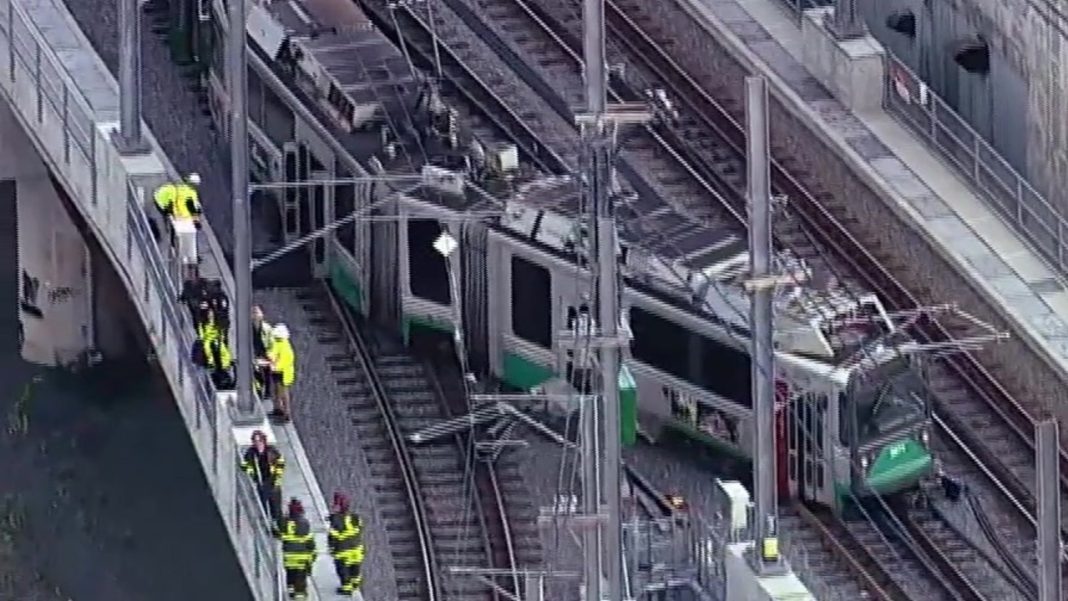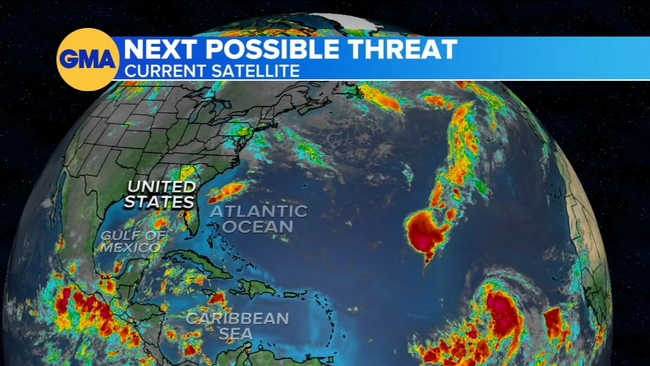On a seemingly ordinary Tuesday afternoon, commuters in Cambridge, Massachusetts, found themselves grappling with an unexpected crisis as an MBTA Green Line train derailed near the Lechmere station. The incident unfolded around 5 p.m., prompting a swift response from local emergency services. As the train came off its tracks, seven passengers were taken to nearby hospitals, with several others evaluated for non-life-threatening injuries.
Many riders recounted their experiences, highlighting the chaos and concern that ensued. “I saw two people with neck braces on over there in the stretcher,” shared commuter Arianna Landnie. “It was scary — I use the train all the time. Just think about it, that could’ve been me.” Her sentiments echo a prevalent anxiety among daily commuters, who often place their trust in public transportation systems to deliver them safely to their destinations.
At the time of the derailment, approximately 50 passengers were aboard the train, a fact that underscores the potential scale of the tragedy. Fortunately, thanks to quick actions by emergency responders, the situation was managed without more severe consequences. Following the incident, the Cambridge Fire Department reported that fire crews disabled catenary power to the train, a critical safety measure to mitigate further risk.
In the aftermath, the MBTA announced that shuttle buses would replace train service between North Station and Medford/Tufts, with alternative transportation options like the Route 87 bus suggested for frustrated commuters. Brian Kernan, another regular rider, remarked on his preference for walking over taking the train: “I always try to walk. I walk two-and-a-half miles to work rather than take the T, because my walk is more dependable. I know exactly how long it’s going to take every day.” His perspective reveals a growing trend among urban commuters who are reassessing their travel options in light of service reliability.
As investigations commenced, MBTA officials indicated that operator error might be a contributing factor. Ryan Coholan, the MBTA’s chief operating officer, stated at a press conference, “Investigation is ongoing, but preliminary indications do rule out any issues with the track structure, and right now we’re focused on the human factors involved with this incident.” This assertion not only highlights the importance of human oversight in rail operations but also raises broader questions about training, safety protocols, and the culture within public transit systems.
The National Transportation Safety Board is also involved in the investigation, ensuring that a comprehensive review of the incident takes place. The MBTA issued a statement expressing their commitment to thoroughly investigate the derailment to prevent future occurrences: “The MBTA sincerely apologizes to riders for the frustration and distress this incident has caused. We are committed to thoroughly investigating this matter to ensure this does not happen again.” Such assurances are crucial for restoring public trust, especially in a time when incidents like this can quickly erode confidence in public transportation.
Ultimately, this derailment serves as a stark reminder of the vulnerabilities inherent in urban transit systems. As cities continue to grow and public transit becomes an increasingly vital component of urban infrastructure, ensuring safety and reliability must be a top priority. For commuters like Landnie and Kernan, incidents like these not only disrupt their daily routines but also provoke deeper reflections on the systems they rely upon.
As investigations continue and the community processes this unsettling event, the focus remains on recovery and the vital lessons that must be learned to safeguard the future of public transportation. In an age where the demand for efficient and safe transit options is at an all-time high, the stakes have never been higher for agencies tasked with navigating the complexities of urban mobility.

